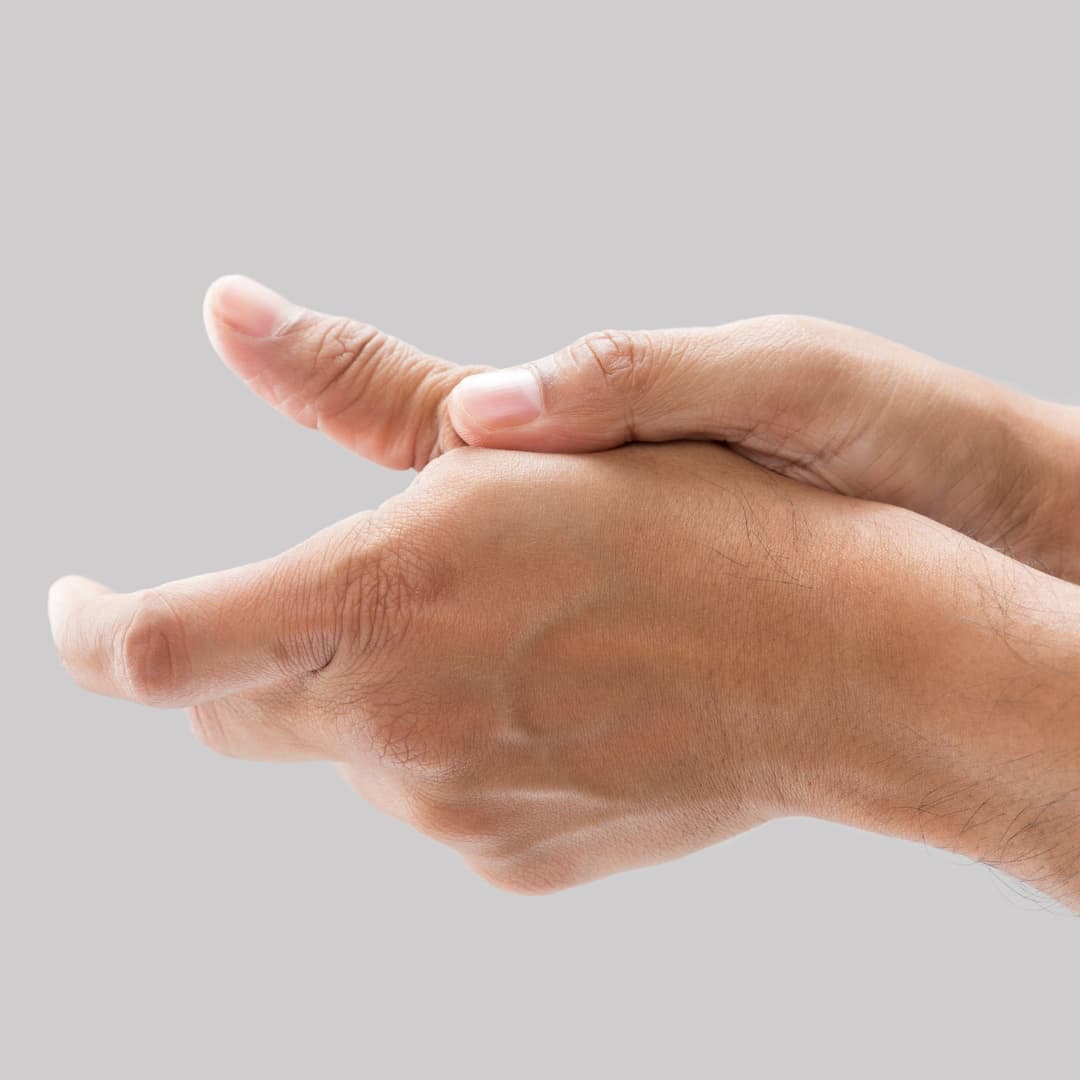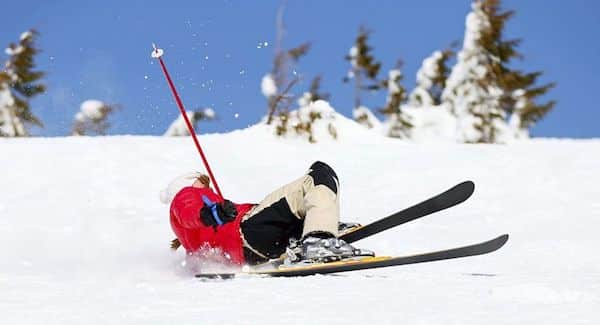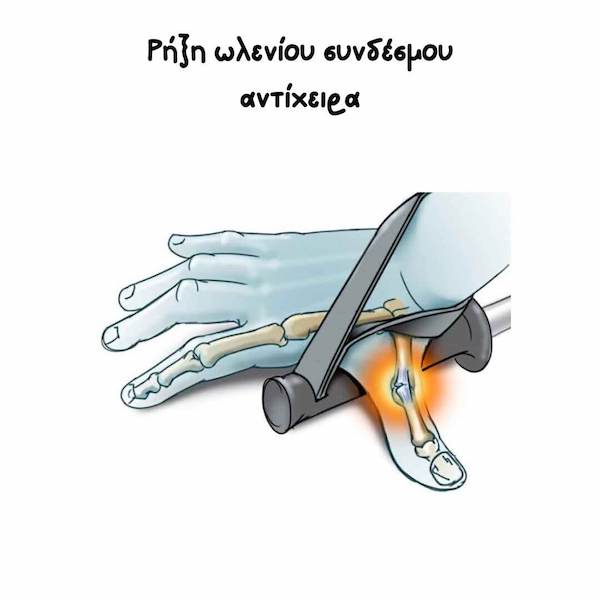Georgios Panagopoulos MD | Orthopaedic Surgeon

Table of contents
What is a thumb UCL tear?
The ulnar collateral ligament or UCL of the thumb is a strong ligament located at the base of the thumb, in the web space between the thumb and the index finger. The UCL can get sprained or torn when your thumb is forced away from your hand, i.e., when hit by a ball or while skiing. An acute UCL injury is common in sports, including skiing, football, volleyball, and is often referred to as skier’s thumb. A chronic variety of the injury, known as gamekeeper’s thumb, is caused by attenuation of the UCL due to repeated stress.


What causes a thumb UCL tear?
A thumb UCL tear is typically either caused by a fall on the outstretched hand with the thumb in an abducted position, or as a result of the thumb being hit by a ball or racquet and forced into hyperabduction. People who enjoy skiing are at risk, but also those who practice sports that involve a ball (football, basketball, volleyball) or a stick (hockey, lacrosse).


What are the symptoms?
The symptoms include pain and disability at the base of the thumb, in the web space between the thumb and index finger, that gets worse with pinching and grasping. Thumb swelling and weakness or inability to grasp re also common.
Diagnosis
History and physical exam are always an essential part of the diagnostic process. A history of thumb hyperabduction or involvement at sports at risk point toward a provisional diagnosis. During the exam, a distinction can be made between an overstretched/sprained (stable MCP joint, Grade 1) or partially torn ligament (unstable but with an endpoint, Grade 2), or a fully torn ligament (Grade 3, no endpoint). An x-ray may show a small bony avulsion that sometimes accompanies the torn ligament. An ultrasound or an MRI scan can be used to confirm the diagnosis.
Treatment
An overstretched or partially torn ligament, as determined by clinical exam or MRI, can be treated conservatively with a splint. The splint must be worn for about 6 weeks to give your ligament the chance to heal properly. However, a fully torn ligament usually needs surgery. That’s because the UCL usually gets displaced away from its insertion and another structure called adductor aponeurosis gets interposed, preventing the UCL from healing in its anatomical position (Stener lesion). If the UCL tear is caught early, it can be repaired with a special device called a suture anchor.
Σε περίπτωση χρόνιας βλάβης (άνω των 6 εβδομάδων), ενδείκνυται η χρήση τενόντιου μοσχεύματος, το οποίο ο κ. Παναγόπουλος λαμβάνει από άλλο σημείο στο ίδιο χέρι (συνήθως FCR ή PL). Σε κάθε περίπτωση, πρόκειται για χειρουργείο ημέρας και ο ασθενής γυρνάει σπίτι μερικές ώρες μετά το χειρουργείο. Τα μετεγχειρητικά αποτελέσματα είναι εξαιρετικά και ο ασθενής δύναται να επιστρέψει στις καθημερινές δραστηριότητες μερικές εβδομάδες μετά το χειρουργείο.
FAQs - Frequently Asked Questions
What is the thumb UCL?
The ulnar collateral ligament or UCL of the thumb is a strong ligament located at the base of the thumb, in the web space between the thumb and the index finger. An acute UCL injury is often referred to as skier’s thumb.
What's the usual mechanism of injury?
A thumb UCL tear is typically either caused by a fall on the outstretched hand with the thumb in an abducted position, or as a result of the thumb being hit by a ball or racquet and forced into hyperabduction.
How is diagnosis made?
– History & clinical exam
– X-rays
– Ultrasound
– MRI
What's the treatment?
An overstretched or partially torn ligament can be treated conservatively with a splint for 6 weeks. A fully torn ligament usually needs surgery, because it gets displaced away from its insertion by the adductor aponeurosis (Stener lesion).
Find us
Book an appointment with us today
